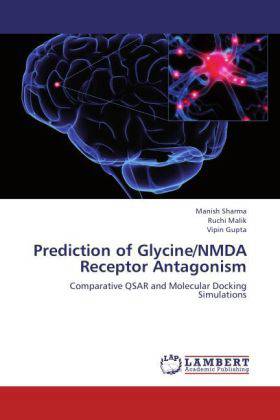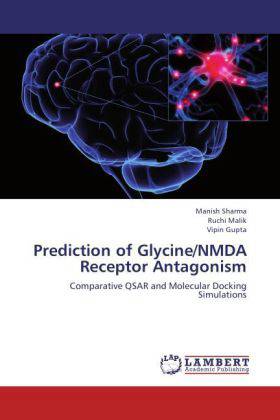
- Afhalen na 1 uur in een winkel met voorraad
- Gratis thuislevering in België vanaf € 30
- Ruim aanbod met 7 miljoen producten
- Afhalen na 1 uur in een winkel met voorraad
- Gratis thuislevering in België vanaf € 30
- Ruim aanbod met 7 miljoen producten
Zoeken
Prediction of Glycine/NMDA Receptor Antagonism
Comparative QSAR and Molecular Docking Simulations
Manish Sharma, Ruchi Malik, Vipin Gupta
Paperback | Engels
€ 77,95
+ 155 punten
Omschrijving
The book comprises detailed Comparative QSAR and Molecular Docking Simulation study on selective glycine/NMDA receptor antagonists. Multiple regression Hansch analysis was conducted on fourteen diverse series. Equations generated were internally, externally and laterally validated. They indicated the importance of lipophilic, electronic and steric parameters of various substituents on quinoxalines, quinoxalin-4-ones and quinazoline-2-carboxylates. Comparison among equations with scaled CMR parameter indicated involvement of unique dual allosteric (normal and inverse) effects. Such allosterism in glycine/NMDA receptor has not been reported before. Inversion point in both relationships was amazingly 10. Accuracy in prediction of biological activity of compounds with aromatic substituents in docking simulations could not be calculated irrespective of their presence in either upward or downward legs of both closed and open parabola. This is suggestive of a mechanism wherein aromatic substituents are involved in changing the shape of active site residues of the glycine subsite. Based on non-linear closed parabolic relationships, some new promising molecules were proposed.
Specificaties
Betrokkenen
- Auteur(s):
- Uitgeverij:
Inhoud
- Aantal bladzijden:
- 232
- Taal:
- Engels
Eigenschappen
- Productcode (EAN):
- 9783659179723
- Verschijningsdatum:
- 30/07/2012
- Uitvoering:
- Paperback
- Afmetingen:
- 152 mm x 229 mm
- Gewicht:
- 345 g

Alleen bij Standaard Boekhandel
+ 155 punten op je klantenkaart van Standaard Boekhandel
Beoordelingen
We publiceren alleen reviews die voldoen aan de voorwaarden voor reviews. Bekijk onze voorwaarden voor reviews.











